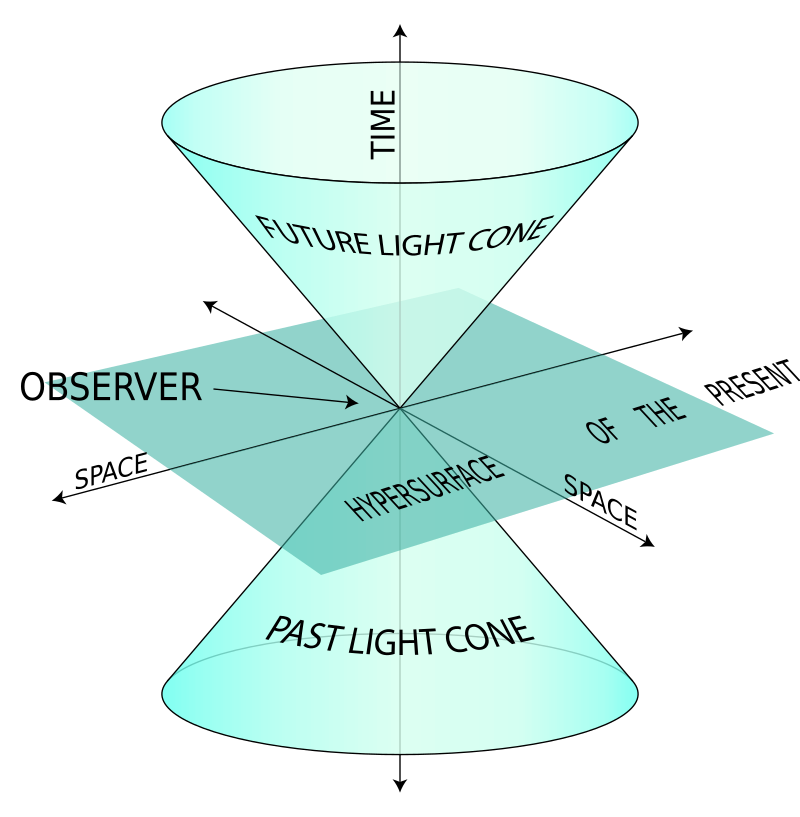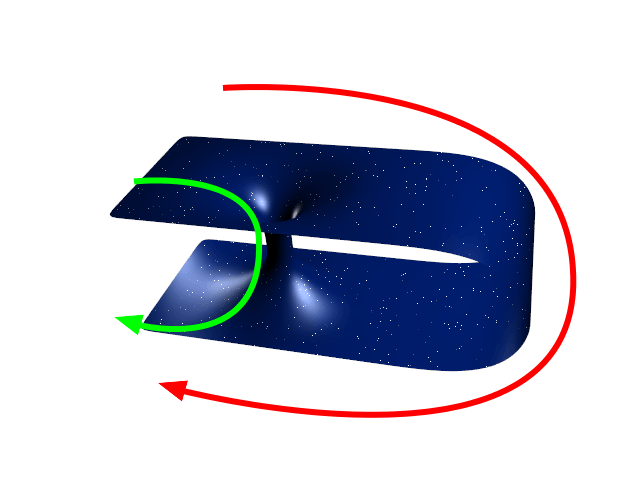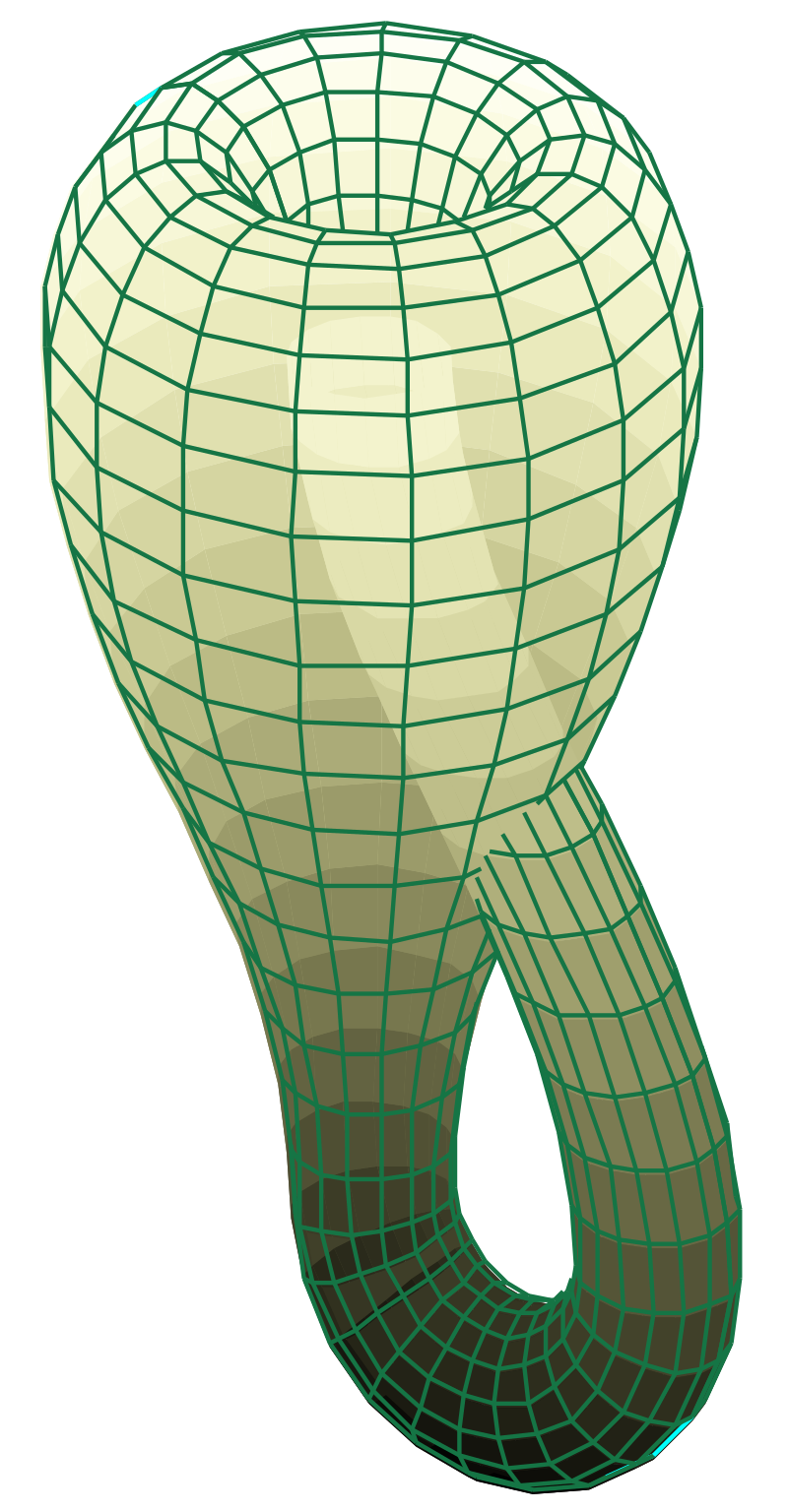The Search For Intelligent Life
Posted 16 May 2024
So! I've got a lot to say on the topic of aliens, just because I like thinking and talking about aliens.
Before we go on, I'll establish that when I say 'aliens', I'm referring to any life forms- whether they are able to communicate with us or not- from another planet.
Overview:
- How we search for aliens
- The problem of distance
- The problem of time
- A shortcut in spacetime
- Conclusion
How we search for aliens
How do we search planets for life? We can't visit every planet and search manually- that would take too long! And we don't just look through the Hubble telescope to search. To find life, we use a little knowledge of biology, chemistry and physics.
'Transit spectroscopy' is a technique employed to find life on planets. A transit is the event where a telescope is fixed on a star and observes a planet orbiting it pass in front of the star. By capturing the light that passed through the planet's atmostphere and analyzing it, we can deduce the composition of the planet's atmostphere.
Spectroscopy measures the intensity of the different wavelengths of the spectrum of light- different molecules absorb different wavelengths of light, which will cause an 'absorption line' in their place in the light spectrum. This will appear as a 'dark' line- or a line where the intensity of light is reduced- in the spectrum of light picked up from the planet's atmostphere. Thus, by analyzing the absorption lines, we can determine the composition of the planet's atmostphere.
To detect life, we look for 'biosignature gases' in the planet's atmostphere, which are gases that can only be created by organisms that are living, or have lived. These gases include ammonia, nitrous oxide and oxygen.
This technique allows us to search for life 'as we know it'. The problem arises when we consider that life may not resemble life on Earth, and thus may not give off these biosignature gases. But that's a different topic altogether.
The problem of distance
There's going to be large numbers here, so let's struggle to wrap our minds around the immense scale of the universe together.
It's accepted that the universe is expanding at a rate of around 67 to 74 km/s/Mpc, or 67 to 74 kilometers per second per megaparsec. A 'parsec' is 3.26 light-years of distance, so a 'megaparsec' is 3.26 million light-years of distance. So for every 3.26 million light-years of distance further from us an object is, it is moving away from us 67 to 74 kilometers per second faster.
Since the further away something is from us, the faster it moving away from us, the distance we can see into the universe is limited, and the distance we can reach is more so.
Currently, the furtherest distance we can see into the universe is 46 billion light years away. We get this number because, (1) the universe is estimated to be 13.8 billion years old, which means light can reach us if it was 13.8 billion light years or less away, and (2) factoring in the expansion of the universe, objects that were 13.8 billion light years away from us are now around 46 billion light years away.
The limit of distance we can reach is around 14 billion light years. Beyond that distance, objects are moving away from us faster than the speed of light, which means that we'll never see what happpens to them from now, and we'll never be able to reach them. Furthermore, the objects within this range of 14 billion light years are moving away from us faster all the time.
Considering that the probability of life existing in a recognizable form on any habitable planet is extremely low, and the number of habitable planets within our reach is low as well, our chance of finding life is- you guessed it- low. That chance is decreasing all the time, too, so we need to search fast. If aliens exist beyond our observable universe... let's hope they've discovered the secret of faster-than-light travel. Until we do, we're limited by distance.
The problem of time
If we somehow manage to get around the problem of distance, the other issue is that the universe is so old, and will go on for a lot longer after humans have been wiped out by, like, nuclear war, or an asteroid, or our own destruction of the planet. The universe is 13.8 billion years old, and humans have only been around for 300,000 of those years. Humanity's existence is but a flicker in the lifespan of the universe, which could continue to expand and change for some trillions of years until heat death.
Life on other planets in our observable universe could have existed and gone extinct way before humans even emerged- and may emerge after we go extinct. It doesn't seem likely that we exist at the same time as life on other planets in our observable universe.
A shortcut in spacetime
A theoretical way we could get around these problems is a shortcut between two points in the universe that were previously unreachable- a wormhole, or an Einstein-Rosen bridge. There's a lot of complicated math involved, but let's stick to the basic idea.
To understand a wormhole, we need to understand that the universe is made up of at least 4 dimensions. 3 of those dimensions are space (you can travel forwards and backwards, sideways and up and down- that's three dimensions). The fourth dimension is time, and we're always travelling forwards in time.

The past light cone is everything that could have happened, while the future light cone is everything that can happen. A point in the past can be connected to a point in the future by a straight line, a world line.
Now, if we were to picture spacetime... we wouldn't be able to. We can't wrap our heads around it. But we can imagine it as a 4-dimensional grid, where each point in the grid is a point in spacetime. The shortest line between two points in spacetime is a straight line, but we cannot traverse the time dimension, so there are points in spacetime that are too far away from us to reach as a result of faster than light expansion.
To make it easier to understand, picture space-time a piece of paper that is folded, as seen below- so it is 3-dimensional.

We can only traverse the surface of the paper, or 2 dimensions, because we cannot traverse the 3rd dimension. A wormhole would be punching a hole through the paper, connecting two points that were previously unreachable. This would allow us to travel between two points in spacetime that were previously unreachable. The 4D representation of this is the Klein Bottle.

Wormholes are consistent with general relativity, and recently, it was discovered that though wormholes are unstable, they can be stabilized by a form of matter- exotic matter- that has negative energy density. There are other solutions and theories as to how a wormhole could exist and be traversable by humans, but the major problems are that: we have yet to observe one, and a wormhole would require a black hole on either end. A black hole would rip us apart. Until we can solve these problems, wormholes are out of the question.
Conclusion
TL;DR:
- Aliens probably existed, or will exist at some point, but the likelihood of them existing at the same time as us is low.
- If they do exist, and exist outside our observable universe, we will never know that they exist. If they exist more than 14 billion years away from us, we will never be able to reach them...
- Unless we, or they, invent faster-than-light travel, or
- We find a way to travel to parts of the universe that are thought to be unreachable- such as via wormholes.
I hope this was interesting! I'm no expert in these topics, I just learning new things and infodumping. If you find anything inaccurate, feel free to let me know :).